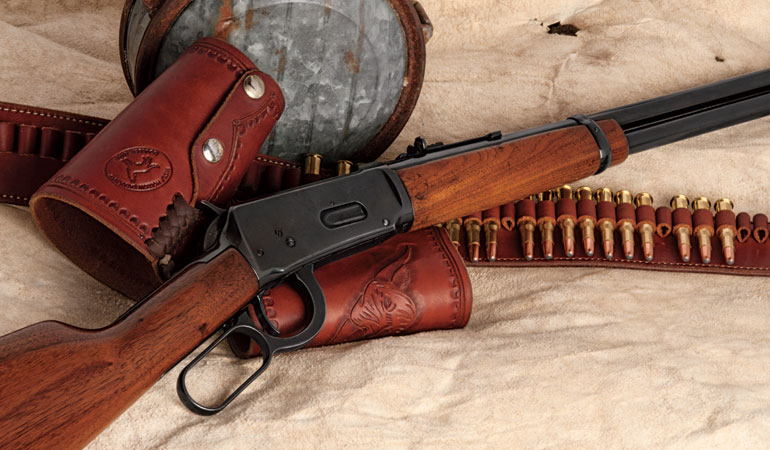Epic Royal Guards Of Greece March


Like many other military rifles of the 19th and 20th centuries, the Swedish Mauser has recently appreciated in value. New and experienced collectors alike flock to these rifles; some for their excellent shooting characteristics and others for their collectability, along with the beautiful fit and finish shared by all variants of these fantastic guns. Unfortunately, escalating prices have become a growing barrier to entry.
There is still a decent supply of M96 long rifles circulating in local gun stores throughout the country, but the rarer variants have become expensive by comparison and quite difficult to track down. The Swedish Mauser M94 cavalry carbine, in particular, has become increasingly desired by collectors.
Luckily, there is a way that military surplus shooters may be able to get their hands on a genuine M94 carbine, at a price a bit lower than the going rate. While this may sound too good to be true, it’s all owed to the fact that collectors differ in their outlooks on what makes a classic firearm like the M94 worth having.

Interarms was responsible for having imported a vast quantity of guns to the U.S., starting in the early 1950s. Many shooters are familiar with the Interarms Walther PPK handguns, which proved extremely popular for both defensive and recreational use. During the years that the company operated, a great focus was often put on the importation of military surplus firearms from various countries of origin. European bolt-action rifles such as the Swedish Mauser were purchased overseas, imported and subsequently stockpiled in warehouses to be sold.

In the case of the Swedish M94 cavalry carbine, Interarms decided to engage in a process that could be seen either as a destructive marketing tactic or as a creative way of import marking a firearm. Interarms opted to ground off the manufacturing date information present on the receivers of the carbines.
In its place, they marked the rifles “G33/50.” This fabricated designation was possibly an attempt to liken its name to the German G33/40 mountain carbine. The hallmark Swedish unit disks, located on the stocks of the carbines, were also replaced with disks displaying the round for which the carbine was chambered, as well as its country of origin.
Ultimately, this method of import-marking the carbine would lead to a disparity in the collectability of the M94 carbines that had been altered by Interarms and those which had come into the country without alteration.
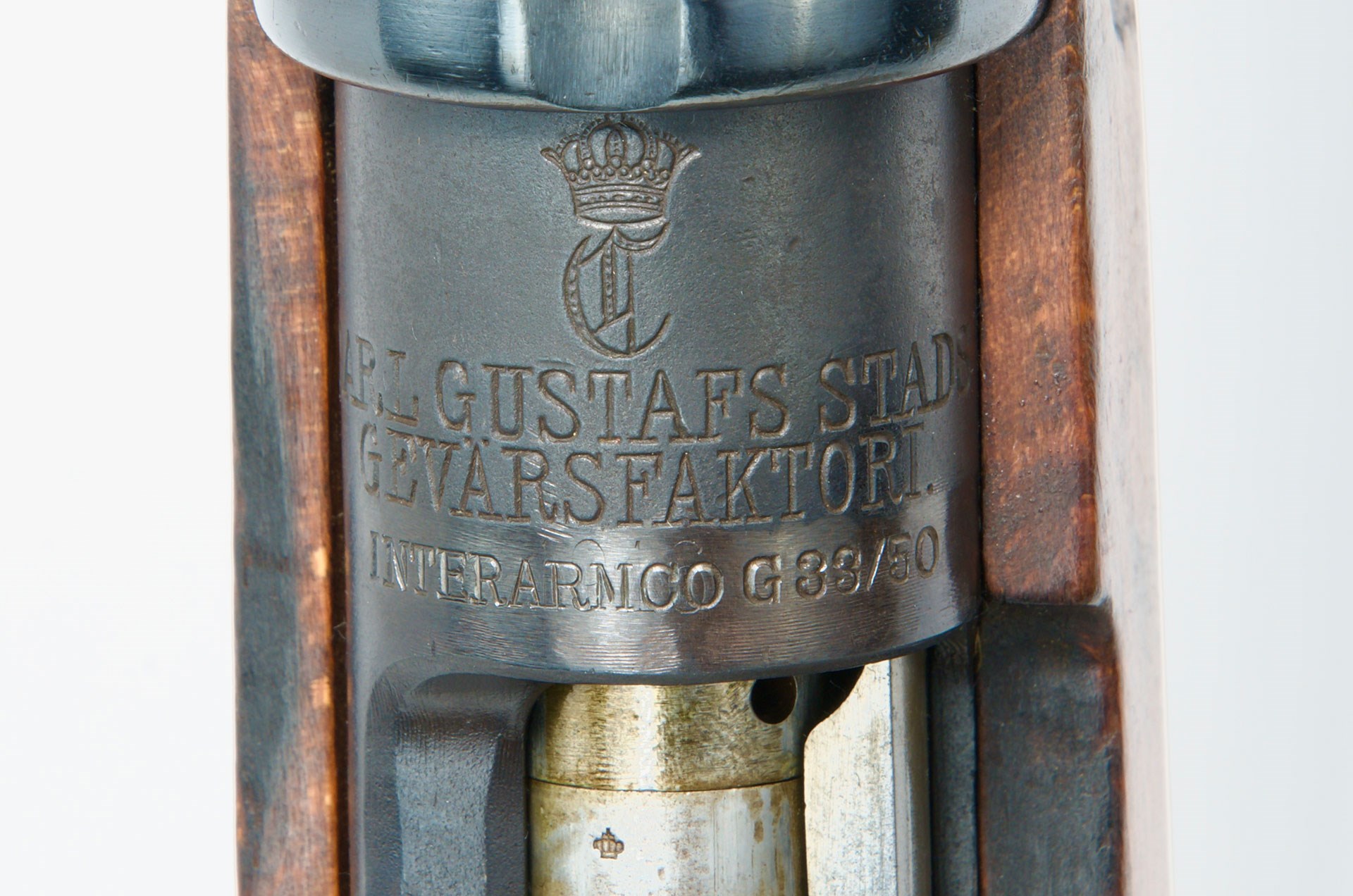
The bright side of this situation is that not all military surplus collectors value firearms the same way. Many collectors would not want a firearm that has been altered from its original, as-issued state. Many other collectors would enjoy owning just such a gun, whether they only want to fill a gap in their collection with the correct pattern of firearm or they plan to shoot it. For the latter, the Interarms G33/50 carbine is an excellent opportunity to take home one of the handiest bolt-action carbines of the era.
The Interarms G33/50 carbine is functionally identical to a Swedish M94 or M94/14 carbine. That’s because these Interarms carbines started life as those very firearms. If a collector can get past the slight visual differences of the G33/50, they’ll find it has all of the same great characteristics as the untouched Swedish carbines.
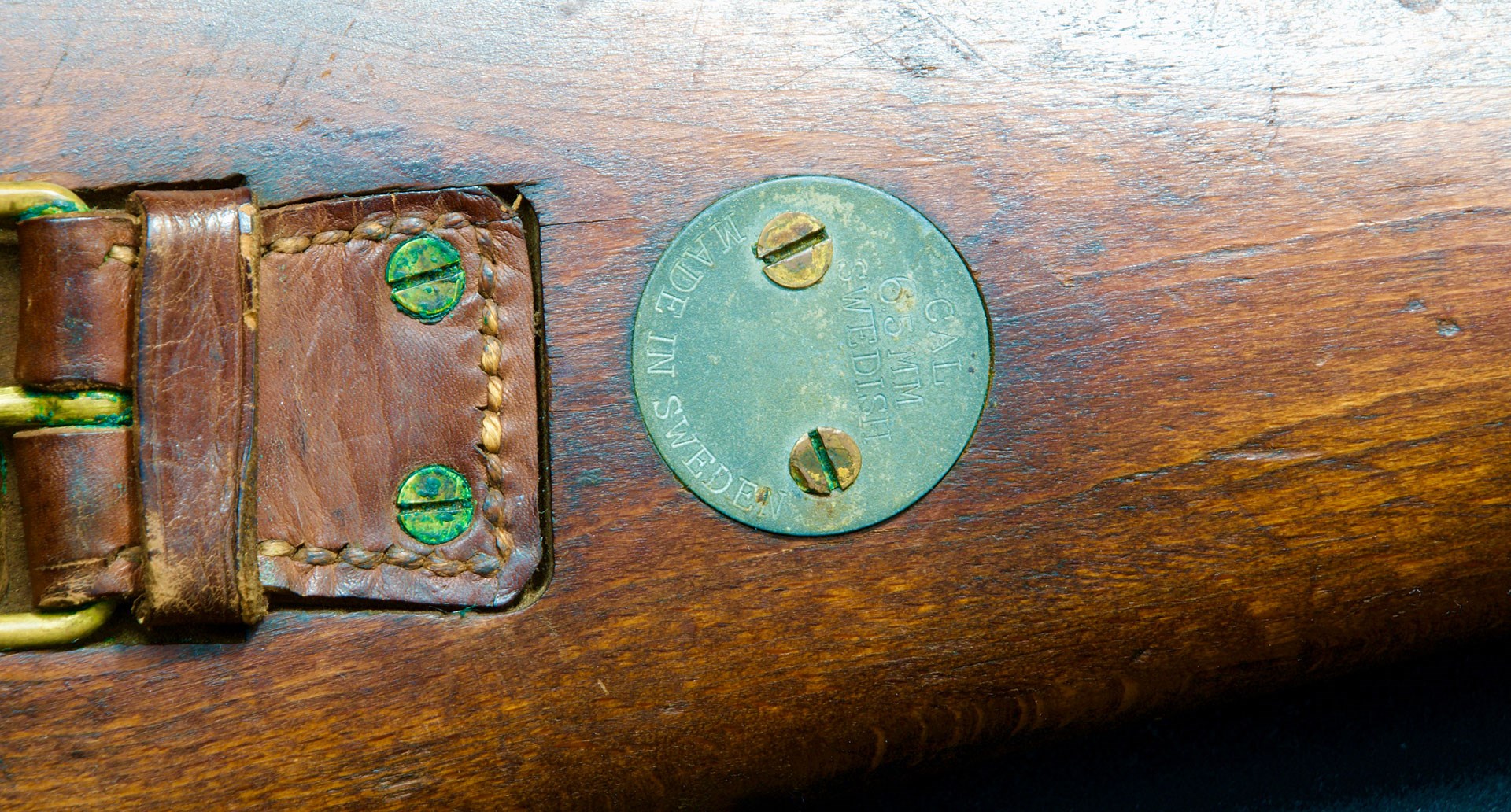
Carbine versions exist of many popular military surplus bolt-action rifles. The Swedish Mauser is an interesting outlier, as it began life in carbine form, with rifles being introduced soon after. The carbine variants of many other military-surplus rifles are tied to the original chambering of the full-length platform. Guns like the Austrian M95 carbine, chambered in the potent 8×56 mm R cartridge, suffer from extremely stout recoil. Due to its chambering in the mild and effective 6.5×55 mm Swedish cartridge, the G33/50 does not share this issue.
The 6.5×55 mm Swede is an excellent cartridge for everything from hunting sizeable game to long-range target shooting. This cartridge shoots flat and packs decent power for its smaller-diameter bullet. The other major plus of the 6.5×55 mm cartridge is the level of availability it has maintained over the years here in the United States. Many American ammunition manufacturers have developed loads for the 6.5×55 mm round. It can generally be found after some looking around in gun stores in most areas of the country. It is also available to purchase online at somewhat reasonable prices compared to some contemporary cartridges.
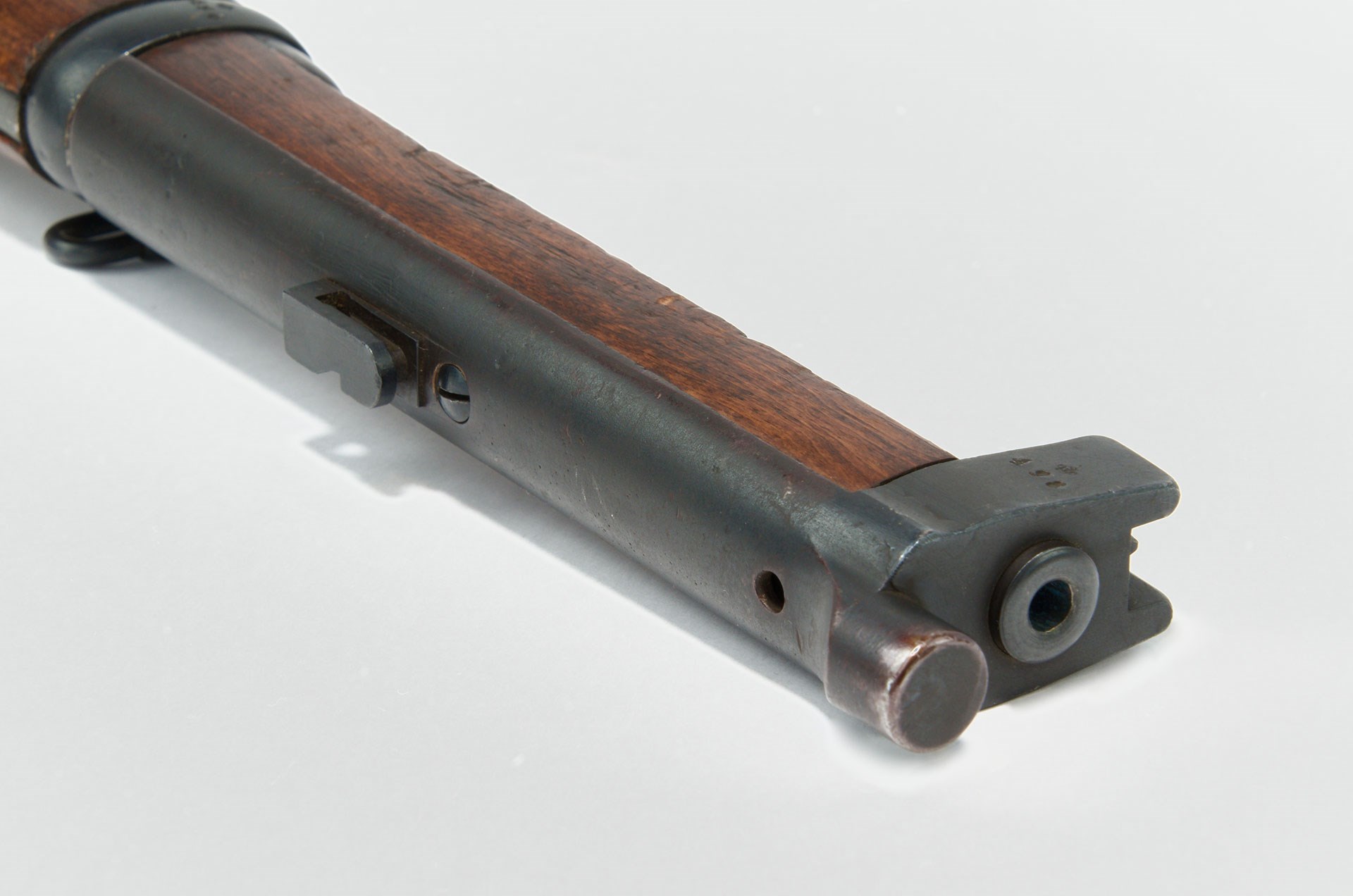
On the range, the Swedish carbine is a fun and pleasant shooter. Despite its small size, it has minimal recoil. The impulse is not nearly as sharp as many contemporary carbines. There is little rearward push and only a slight rise of the stock at the shooter’s cheek while firing. While it’s plenty loud, I would compare the recoil impulse to roughly the softness of an AR-15. It is truly a pleasure to shoot from all positions standing, sitting at a bench or prone.
The action is buttery smooth, which allows for very rapid manipulation of the bolt. This can be fun to put to work in timed shooting drills, where the carbine’s small size and ability to fire quickly come to the forefront. Another feature that aids in this regard is the generous clip guide rails on the receiver. Loading the carbine can be done quickly and smoothly with the use of 6.5×55 mm Swedish stripper clips. Without using the clips, the Swedish carbine is still quite easy to load. The layout of the chamber and the smooth magazine follower make it no problem to load the five cartridges in one at a time, by hand.
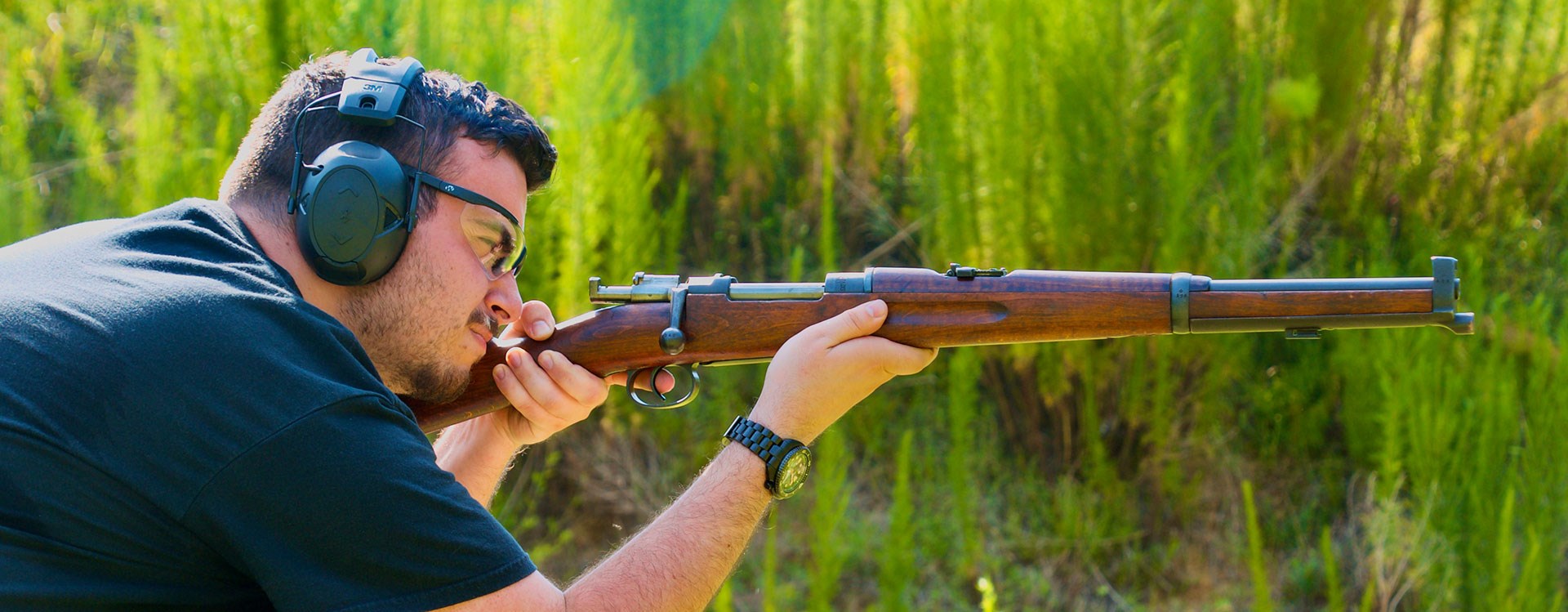
The G33/50 can’t quite compete with the full-length M96 Swedish Mauser rifle for accuracy, but it does an admirable job for its size. The gun was very consistent on paper silhouette targets out to 100 yards. It was also fully capable of putting shots on the steel silhouettes hanging at the 150-yard line, with me standing. I’m eager to push the carbine out further on a longer range at some point, to see what it’s capable of. The 17.7″ barrel will certainly have its limitations at distance, but I am confident that the carbine will perform admirably, considering its consistent accuracy thus far.
Swedish Mausers have long held a reputation for excellence when it comes to fit and finish. The G33/50 is no exception. Like most all Swedish carbines, imported or otherwise, the craftsmanship on the G33/50 is a thing of beauty. While the importer may have cut corners while readying the gun for sale in the U.S., the original quality of construction has remained intact. Even on a rougher example, like the one pictured, the wood furniture has a gorgeous complexion, with a mix of light and dark tones. All over the carbine, small features demonstrate the attention to detail shown in the gun’s making. From the cool-looking Swedish crown mark that can be seen on the cocking piece of the bolt while aiming the gun, to the textured metal in the places where operation requires fine motor control, the carbine displays great quality.
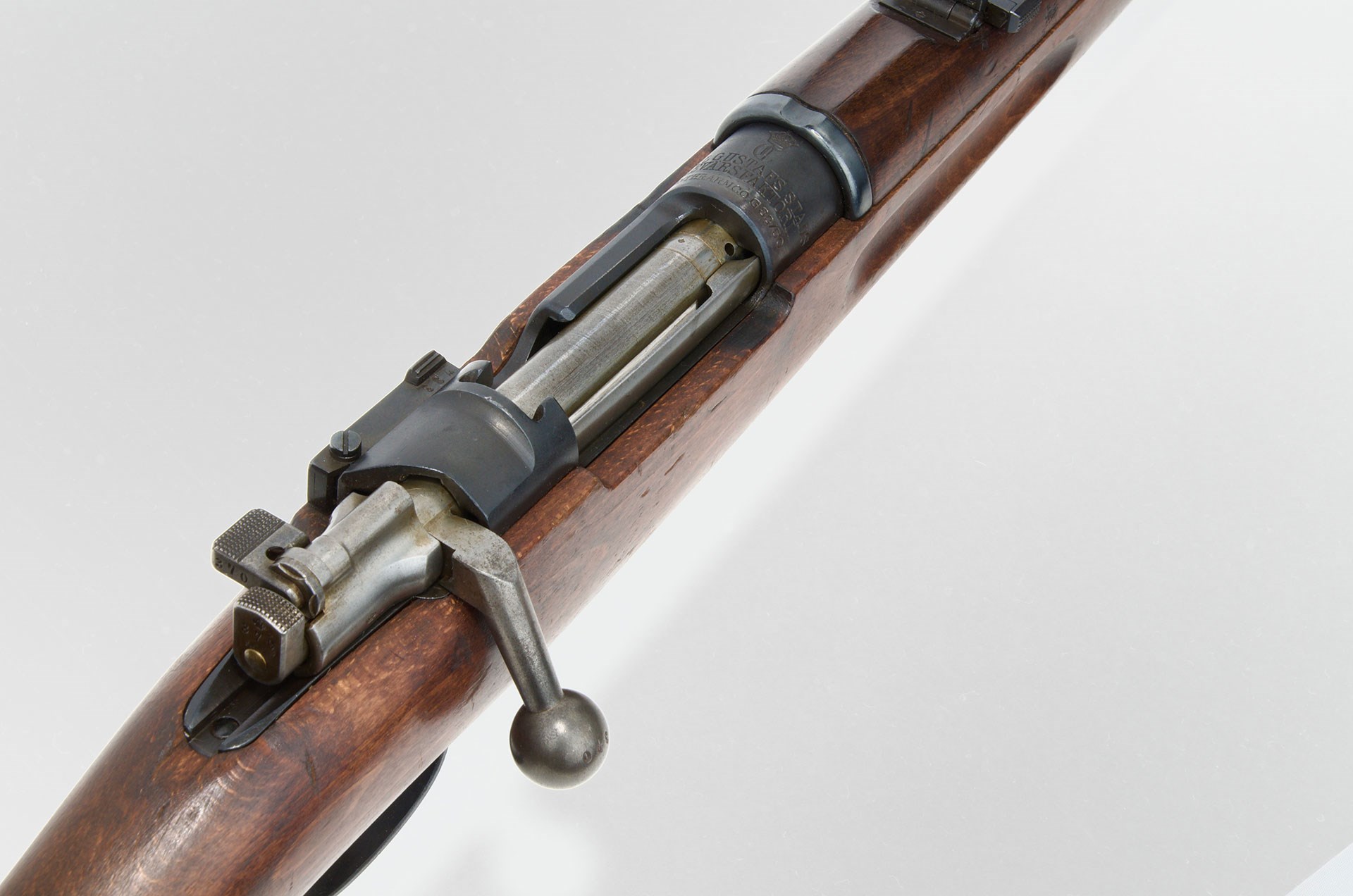
The Interarms G33/50 Swedish carbine really is an excellent choice for those collectors and shooters who can tolerate the loss of original markings. Its performance and ergonomics are identical to untouched M94 and M94/14 carbines. The absence of the manufacturing date and unit disk are unfortunate, but it still retains almost all the charm of the untouched carbines. For those collectors who just want an example of a Swedish Mauser cavalry carbine to own and shoot, the G33/50 gives you the exact same shooting experience without paying the premium that an untouched carbine commands.
Ruger SP101 .327 Federal Magnum
Robinson Armament XCR-L Range 2
A special episode of “Kentucky Life,” scheduled to air on KET for the first time at 8 p.m. May 11, takes a closer look at what has been called the Great Kentucky Hoard.
“I initially found the 1856 Seated Liberty Half Dollar probably 20 to 30 feet from where the hoard was located,” KET says the farmer told “Kentucky Life.” “I would have never believed what came next. Things that only happen in dreams. When I continued walking and saw the glint of gold — a thick reeded edge.
“When I pulled the coin from the ground, I was astonished when I realized I was holding a $20 Double Eagle from the 1860s. After I flipped the first clump of dirt over the next 45 minutes to an hour, the coins kept coming. I knew it was hundreds.”
The identity of the man who unearthed the coins has not been publicly divulged, nor has the location of his find.
Chip Polston, host and producer of “Kentucky Life,” said in an interview he felt it was important for his show to respect that.
“I completely understand why he wants to remain anonymous,” said Polston, who for years was the face of the Kentucky Lottery and said he knows the pressures that come with sudden wealth. “He doesn’t want to open up his front blinds some Saturday morning and there be 70 people with shovels and metal detectors. …What would happen to his farm?
“It could be a huge mess for him.” The Great Kentucky Hoard, more than 700 gold coins dating to the Civil War era, was found in a Kentucky field. The exact location has not been made public.
The Great Kentucky Hoard, more than 700 gold coins dating to the Civil War era, was found in a Kentucky field. The exact location has not been made public.
Jeff Garrett, a Lexington-based expert on rare coins, worked with the man who found the treasure to help bring the Great Kentucky Hoard to retailer GovMint.com for sale. The trove included $1, $10 and $20 gold coins, including rare 1863 Double Eagles.
Polston said he initially reached out to Garrett, who granted an interview in which he told how the farmer first sent him a grainy photo of a coin, and how they arranged to fly with the multi-million-dollar collection to Florida, where the coins were prepared for sale last year.
Garrett, who founded Mid-American Rare Coin Galleries in Lexington, helped Polston connect with the farmer.
Polston said he sent the farmer six written questions, not knowing if he’d get an answer.
After a few months of going “back and forth,” Polston said the farmer ultimately sent him “three single-spaced typewritten pages” in which he told “how the whole thing came together.”
“It’s a remarkable story,” Polston said.
He said the man told him he was walking in a newly-plowed field when the sun hit a coin in the dirt just right.
“He caught a glimpse of something gold and metallic,” Polston said.
After finding the first coin or two, Polston said the farmer pulled out his phone and began filming as he discovered more and more coins.
“He’s digging through the ground and these gold coins are literally spilling out,” Polston said of the footage.
He said the farmer “has very vivid memories of he and his grandmother walking creek beds” in search of arrowheads and other interesting things.
“This is something he had been doing as a kid,” Polston said.
Polston said that when the story of the treasure broke last July, he knew “it was perfect for our show.”
“There was just so much imagination that was captured by this story,” he said. “I just knew we had to try to tell it.”
Polston said the Kentucky Educational Television Facebook page will ask viewers to weigh in on how they think the gold came to be buried in the ground in the first place.
He said “Kentucky Life” interviewed five people for the episode, and “every single one of them has a different answer.”
The dates on the coins, between 1840 and 1863, coincide with the time when raiders led by Confederate Gen. John Hunt Morgan were active in Kentucky, Ohio and Indiana.
One theory, Polston said, is that a wealthy landowner buried his coins to keep them safe.
Or maybe, he said, the money was stolen and buried by someone who intended to come back and get it but never did.
Polston said the man who found the coins sold most of them but kept a few, including one with the faint imprint of a burlap bag.
After it airs Saturday, Polston said the episode of “Kentucky Life” will be available on YouTube and will be shown again on KET, KET2 and KETKY multiple times over the next week.
